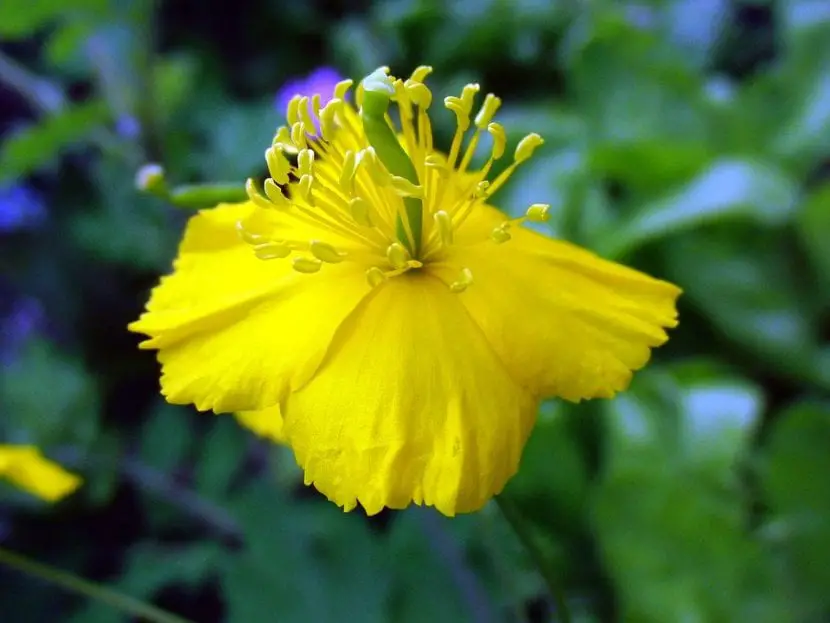
Celandine is a very interesting herbaceous plant: It has a remarkable ornamental value, but its medicinal properties are also not far behind. It is one of those plant beings that can be enjoyed in a pot or in the garden.
So if you want to know everything about it, in this article I will tell you about celandine.
Origin and characteristics
Our protagonist is a perennial rhizomatous herbaceous plant native to Europe, although it is also found in North America as it was introduced by European settlers. Its scientific name is Chelidonium greaterbut it is known more as cedueña, celandine, greater celandine, wart grass or swallow grass.
It is characterized by developing stems up to 80cm tall that arise from a fleshy rhizome. The leaves are very divided, are alternate, pinnatisect, glaucous on the underside and are about 30cm long. The flowers appear distributed in terminal umbelliform inflorescences, from spring to early autumn (May to October in the northern hemisphere). These are 1,5 to 2,5cm in diameter, and have four yellow petals.
The fruit is a capsule that resembles a silique, that is, when the two valves are opened). The seeds are small and black.
What are their cares?
If you want to have a copy, we recommend that you provide it with the following care:
- Location: outside, in full sun.
- Earth:
- Pot: universal growing substrate.
- Garden: it is indifferent as long as it has good drainage.
- Irrigation: frequent. Every 1-2 days in summer and every 5-6 days the rest.
- Subscriber: from spring to summer with Organic fertilizers.
- Multiplication: by seeds in spring.
- Rusticity: withstands cold and frosts down to -5ºC.
What medicinal uses does it have?

Celandine is used to:
- Internal use: bronchitis, asthma, irritating cough, and the like.
- External use: against warts, corns, tumors and to close wounds.
Contraindications
It is very important that it is known that in large doses the ingestion of the fresh plant and latex can cause drowsiness, paralysis of the sensitive nerve endings and bradycardia. It must always be administered mixed with other plants due to its toxicity.
A doctor should be consulted before starting any treatment.
Have you heard of this plant?
